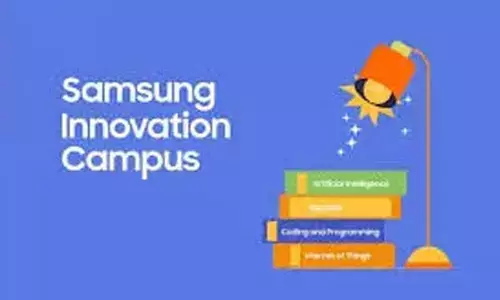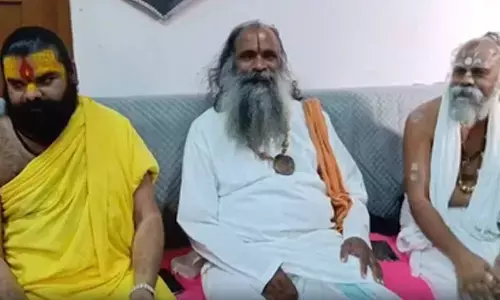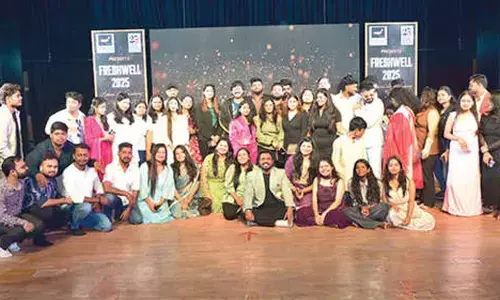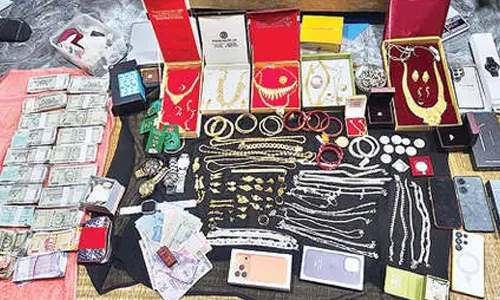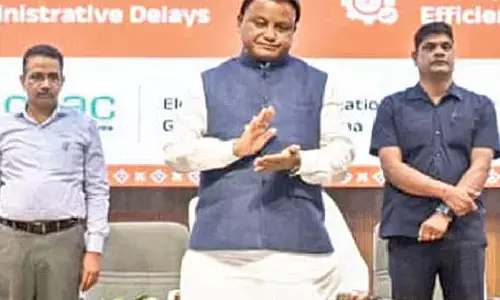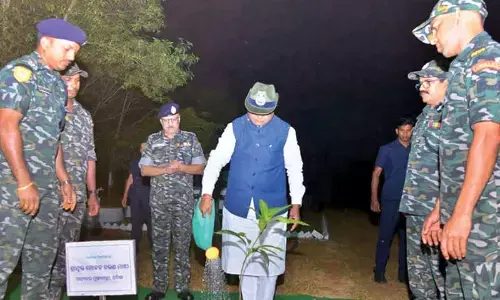Stress on reorientation of science education
Stress On Reorientation of Science Education, Chukka Ramaiah, Bharat Ratna Prof C N Rao. With the poor service conditions, without assurance of any secure future, with a less than 0.9 per cent of our GDP allocated for research funding , we cannot expect miracles.
With the poor service conditions, without assurance of any secure future, with a less than 0.9 per cent of our GDP allocated for research funding , we cannot expect miracles. Rather, the scholars who have joined research fields with high hopes feel so depressed and frustrated that resorting to suicides is not uncommon.
 Bharat Ratna Prof C N Rao has been repeatedly advising us to reorient our science education and there is a valid reason behind it. Only where science develops, research is possible, for technological progress is only the application part of science and without the former, the latter becomes hollow and if we, as a nation, wish to maintain our stature in the international scenario as an important role player, we need to be very focused in our strides in Science.
Bharat Ratna Prof C N Rao has been repeatedly advising us to reorient our science education and there is a valid reason behind it. Only where science develops, research is possible, for technological progress is only the application part of science and without the former, the latter becomes hollow and if we, as a nation, wish to maintain our stature in the international scenario as an important role player, we need to be very focused in our strides in Science.‘Mangalyan’ which is laudable in itself will not make our day. I wish that we should work for revising our Indian industries’ approach and contribution, for a revamping of our outlook in education on science and research, on how quality research can be encouraged in our institutes of excellence, on how we can develop a sociocentric research environ and how we need to develop a truly scientific attitude as well as the necessary skills for team research. My interaction with many scholars in Central University Hyderabad has strengthened my convictions.
Research at a higher level is not an abstract concept which is possible without infrastructure, adequate time, funding, etc. To have a high-end technical start or build a prototype, one cannot just switch on and off the creative, innovative, synthesising, probing, evaluating skills at will.
If a professor is expected to guide 10 to 12 research scholars in different areas simultaneously, it is such an impossible feat that our universities are expecting. While promoting the research avenues in policy and accepting research scholars multifold, neither complementary funding and infrastructure nor regularisation of university faculty has been addressed. With the poor service conditions, without assurance of any secure future, with a less than 0.9 per cent of our GDP allocated for research funding , we cannot expect miracles. Rather, the scholars who have joined research fields with high hopes feel so depressed and frustrated that resorting to suicides is not uncommon. Surely many of these situations can be rectified with adequate support from the Government and the industries.
In our scientific circles, ‘collaboration’ has been a strange word indeed, for in its name, we have been importing discarded and second grade technology, for the so called ‘collaborators’ are tightfisted in sharing or exporting their latest technology to us. Is it surprising that today, Germany, Japan and others are even ahead of USA in developing their ingenious technologies? Our industries can flourish multifold if they support and patronize scientific research for their growth will be in proportion to our self-reliance in ground-breaking scientific research.
Another aspect associated with scientific education is to make scientific thinking and the research attitude sprout from a very young age. It cannot be developed overnight after the young complete their graduation or post-graduation. It is quite encouraging here that there is a gradual shift to experimental, inquiry-based learning in all fields right from the primary school levels now. Both the revised textbooks as well as the supporting resources being provided to teachers to promote student centric skill-based learning are a proof to this.
The active role of the non- profit organisations like ‘Jana VignanaVedika’ (JVV) in popularising the scientific approach is praiseworthy. They believe in what Galileo says, “Science is concerned with knowledge achieved through query and cognizance and with making the knowledge about everything available for everybody.”
In my association with some of the expert professors and teachers from all cadres working for JVV, I appreciated their zeal to popularise science and to promote scientific temper among people; to eradicate obscurantist, superstitious and paranormal and mystical practices from people by means of popularisation of science, to understand the scientific basis behind several of the problems faced by the people and to explore remedial solutions for the same; to encourage quest for knowledge and to strive for national integrity, self- reliance, world peace, social progress and cultural vibrancy; to encourage research in divergent areas with people’s welfare as the prime motto and to design programmes suitable to realize their objectives.
It organises children’s science festivals, such as Balotsavs, Srijanotsavs, joyful learning Bala Melas, etc., frequently on massive scales. To promote quest for knowledge and bent of socio-scientific and technological awareness among school children, the JVV has been running the largest circulated Telugu children’s science monthly magazine, Vidyarthi Chekumuki, since 1990. It conducts Chekumuki Science Talent Test every year for high school children.
If teachers can make our young ones realize that the scientific approach is not limited to their class room lessons but is a regular feature in many of our day to day incidents, be it the problem with their cell-phone, torchlight or their cycle, the students would be comfortably acquainted with the five basic steps like identifying a problem, researching the problem, formulating a hypothesis, conducting experiments and arriving at conclusions.
Then the unseen glass wall between the examination oriented classroom teaching of science and its practical application in real life would be shattered. Having visited many science fairs both in India and abroad, I feel that our students are in no way second to the best in any developed countries in their scientific temper and enthusiasm.
The only difference however is in the supportextended by the National Scientific laboratories and Industries, which is marginal in our country and exemplary abroad. I add here that research in all walks needs a scientific base, an objective, unbiased, logical approach and the scientific temper should permeate all walks of our lives.
Self-confidence on one side, open mindedness on the other should guide and moderate a scientist’s work, be it in chemistry, medicine, history or economics. Patience is another virtue which scientists need along with the team building skills. The names of the Nobel Laureates in this year’s Physics category show that sometimes the rewards of pains taking research come after a seeming eternity! Peter Higgs and Francois Englert won the Nobel Prize in Physics 50 years after theorising the field that gives fundamental particles their mass, and it was now possible with around 500 of the Atlas team from Cern who helped find the Higgs boson!
In their book “ Collaboration and Team Science: A Field Guide”, the researchers stress on one of the vital qualities of this century’s research,explaining what it takes to build a ‘Research Team’,to foster trust among the members for developing a shared vision , to share recognition and credit, strengthen team dynamics , handle conflict etc. Team science has been described as a collaborative and often cross-disciplinary approach to scientific inquiry that draws researchers who otherwise work independently.
Petty and demeaning traits like plagiarism and jealousy have to be nipped in the bud right at the school level itself .Teachers can show that there are many types of research teams, each one as dynamic as its team members. Research teams maycomprise investigators from the same or different fields, also vary by size, organizational complexity, and geographic scope, ranging from as few as two individuals working together to a vast network of interdependent researchers across many institutions and may have diverse goals. When experts in Engineering, medicine, chemistry, biological sciences and other diverse fields have to work as teams, they need all the 21st century skills of team building. If our schools awaken to this important issue right away, we can have quality research along with the much needed scientific temper and education very soon.
Next Story












